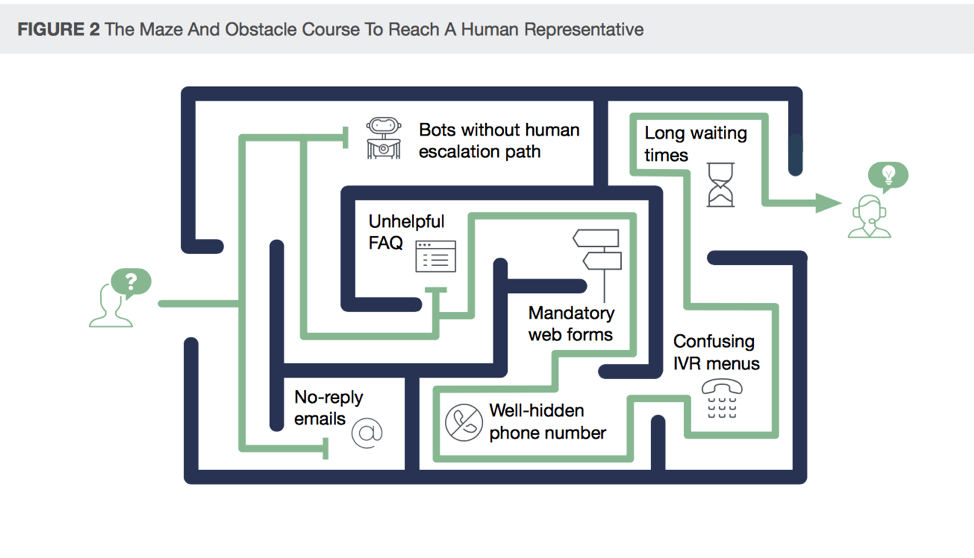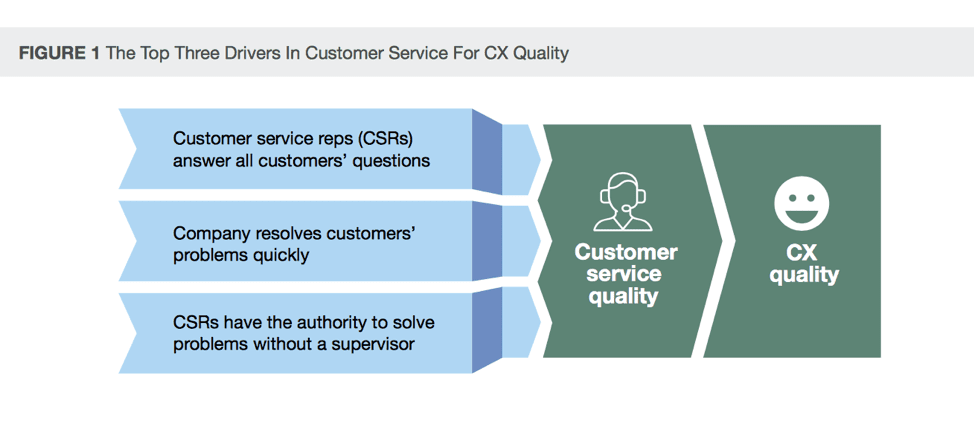
It’s hard to remember a time when customer service did not involve a digital element. As part of an increasingly globalised and digitalised world, forward-thinking businesses often strive to automate all elements of their customer services. Nowadays, call centres are looked upon as outdated and costly hindrances on the ability to deliver a meaningful customer experience. Yet this is far from the truth.
What many companies misunderstand is that digital transformation does not make call centres obsolete. As shown by Forrester in a recent report, the process of digitisation does not decrease the volume of customer services calls. On the contrary, 43% of executives in telecommunications companies actually forecast an increase in call centre calls in the next two years, as a direct result of digital transformation.
It’s clear that companies cannot afford to ignore the continued importance of human employees. Automation may boost the efficiency of customer-oriented processes, but the face and reputation of a business still largely depend on its people. Human employees are vital to crafting the kind of customer experience that gives an organisation that all-important competitive edge in today’s crowded business landscape.
When it comes to refining customer services in the current market, harnessing the human power of an organisation is the smart step to take. First-hand interactions between employees and customers usually produce valuable and personalised insights that might not be captured by automated processes. Collated information on customer preferences can then be communicated to strategists, designers and marketers to help direct and align the company’s approach.
A recent service design project carried out by telecommunications company KPN is a lesson on the power of human resources for advancing customer services. Looking to overhaul their payments collection system, the company assembled a customer service team tasked with harmonising payment-related communications across 26 channels. In the process, other elements of the customer experience were also flagged as areas for improvement. By communicating the findings across the organisation, KPN were then able to enhance customer experiences on a company-wide basis.
Although it may seem less efficient than digitally-led customer services, having human employees talk to customers in real time remains a powerful approach. By encouraging conversations that are purposeful and direct, businesses can simultaneously extract more detailed insights and deliver a more memorable customer experience.
Nonetheless, harnessing people power within customer services certainly doesn’t make technology redundant. In fact, by utilising the possibilities of technology in tandem with human resources, businesses can optimise their customers’ experience.
One of the fundamentals of customer engagement is convenience. By making customer services constantly accessible through a variety of channels, businesses can foster easy and efficient communication no matter when or where it takes place. At Telus, a Canadian telecommunications company, the introduction of an omnichannel service for customers boosted customer satisfaction by 20%. The service redesign also yielded clear financial benefits, cutting end-to-end costs by 15%.
The clear advantage of an omnichannel approach is that both robot and human communication can be used where appropriate. However, chatbots should be limited to dealing with straightforward customer requests with uncomplicated answers. While it doesn’t require a human to answer ‘How do I refund my purchase?’, more detailed queries need to be solved by a well-trained employee, who can properly express the character and values of the brand.

Boosting customer intake is of little use without a strong customer service infrastructure to retain their loyalty. Irrespective of product, continued custom is largely based upon an individual’s experience with a particular brand. This was outlined by results from a recent investigation carried out by Zendesk. While 87% of satisfied customers are likely to recommend or buy again from that brand, 97% of customers who have had a negative experience stop buying from the company and do not recommend it.
Quite simply, great customer service spells customer loyalty, which is good news for any company. The essentials are straightforward. Firstly, customer experience should be made positive by ensuring that human agents understand and advocate the brand promise. This transforms customer service from a laborious necessity into an opportunity to build relationships and cement a brand image.
In addition, improving first impressions is an easy fix that packs a punch. The first point of contact should leave customers feeling welcomed and satisfied, serving as a springboard for future loyalty. Finally, ensuring representatives have the necessary authority and means to respond to all customer queries harbours far more efficient services. Ideally, communication should take place in a single conversation without referral to a supervisor.

With a smart service design, a human approach to customer services can set a business apart. Simple changes can have huge strategic benefits.
As outlined by data from Forrester, businesses can reap the benefits of improved customer loyalty, a deeper understanding of customer needs, and greater cross-sell and up-sell opportunities.
With over 15 years’ experience as technical and consultancy CRM experts, redk aims to support companies seeking to enhance efficiency and profitability through world-class tools that optimise team performance across organisations. Talk to us to see what we can do for your business.



